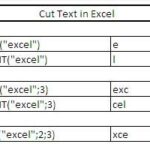Flipping an Excel Spreadsheet Upside Down
Flipping an Excel spreadsheet upside down might be necessary for reordering data, particularly when the most recent entries need to be at the top of a list or for certain types of data analysis or presentation.
How Can You Flip an Excel Spreadsheet Upside Down?
Method 1: Sorting by an Index Column
This method involves creating an index column and sorting the data in descending order, effectively flipping the spreadsheet.
Insert a new column to the left (or right) of your data.
Number the rows sequentially from 1 to the last row of your dataset. If you have data from rows 1 to 100, your index column will range from 1 to 100.
Highlight the entire data range along with the new index column.
Go to the Data tab and select Sort.
In the Sort dialog box, choose your Index column and sort it in descending order. This will flip your entire dataset upside down.
Method 2: Using Formulas (LARGE or SMALL Functions)
If you prefer not to modify the original data or need a dynamic solution, you can use formulas to reverse the order of data.
Insert a new column next to your data.
For flipping numeric data:
- Use the LARGE function to return the largest values in reverse order. The formula for flipping data might look like: =LARGE(A:A, ROW())
- For flipping text data or non-numeric data, use the INDEX and ROWS functions: =INDEX(A:A, ROWS(A:A)-ROW()+1). This formula references the last row and moves backward to the first row.
Drag the formula down to the bottom of the new column to fill it for all rows.
Because these formulas are dynamic, any changes to the original data will update the reversed data. However, if you need a static copy of the reversed data, you should copy the cells containing the formulas and then ‘Paste Values’ to remove the formulas and keep only the reversed data.
Flipping an Excel spreadsheet upside down can be easily accomplished using either sorting by an index column or applying formulas. Sorting is more straightforward and suitable for one-time tasks, while formulas offer a dynamic approach for datasets that frequently change.



